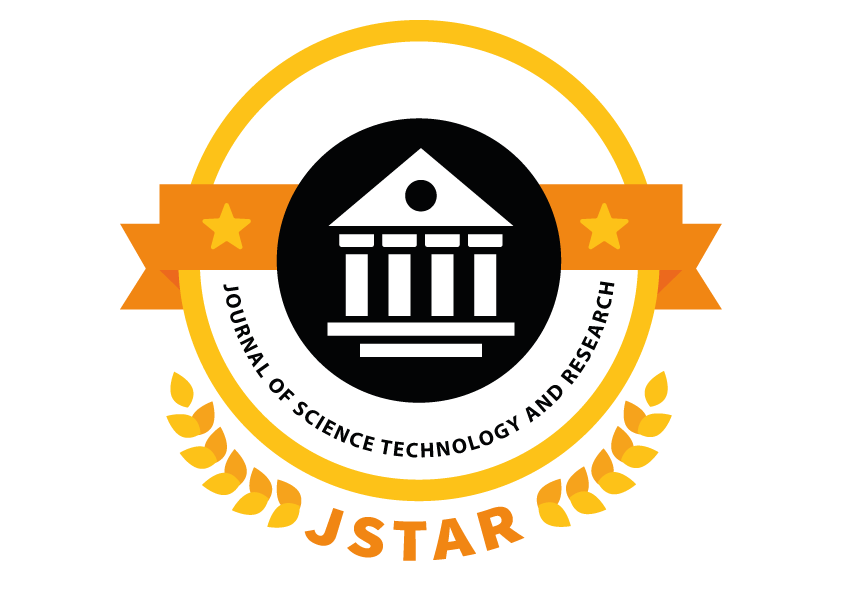Author:
Prof. Mohammed Juned Shaikh Shabbir, Shraddha. R. Sonone, Shraddha. S. Narkhede, Poonam. S. KatkarPublished in
Journal of Science Technology and Research( Volume 6, Issue 1 )
[1] Li, W., et al. (2020). Federated learning for healthcare informatics: A survey. ACM Transactions on
Computing for Healthcare (HEALTH), 1(1), 1-24.
[2] Amani, S., et al. (2019). Formal verification of smart contracts: A survey. Journal of Systems and
Software, 150, 1-20.
[3] K. L. Martinez et al., “Optimizing Blood Inventory Management Using Information Technology,” Vox
Sanguinis, vol. 115, no. 1, pp. 78-85, 2019.
[4] M. A. Hossain, M. A. Rahman, and M. S. Islam, “Design and implementation of a web-based blood
bank management system,” International Journal of Computer Science and Network Security, vol. 17, no.1, pp. 1-7, 2017.
[5] R. Gupta and S. Sharma, “A survey on blood bank management systems,” International Journal of
Advanced Research in Computer Science and Software Engineering, vol. 6, no. 3, pp. 1-5, 2016. [6] Rahul
Sharma, Keyur Shah of Iran, Parth Soni, Bhavesh Panchal, “Health Care application for mechanical man
Smartphones victimisation net of Things (IoT)”, 2016 IEEE
[7] A. K. Singh, S. K. Singh, and R. K. Singh, “Development of a web-based blood bank management
system,” International Journal of Computer Applications, vol. 120, no. 1, pp. 1-5, 2015. [8] M. N.
Rodriguez and P. Q. Lee, “Security and Privacy Challenges in Blood Bank Information Systems,” Journal
of Biomedical Informatics, vol. 55, pp. 180-187, 2015.
[9] E. F. Brown et al., “Benefits of Implementing Web-Based Blood Bank Management Systems,”
Transfusion Medicine Reviews, vol. 28, no. 4, pp. 201-208, 2014.
[10] A. B. Smith and C. D. Jones, “The Evolution of Information Systems in Blood Banking,” Journal of
Medical Informatics, vol. 15, no. 2, pp. 123-140, 2005.
Web-Based Blood Bank
The choice of technology stack is central to the enhancement of efficient and strong blood bank web
application.
This Blood Bank web application uses Mern Stack, MongoDB, Express.js, React.js, and node.js. Each
component in this stack uniquely contributes to the overall functionality and execution of the system [5].
MongoDB: As a NOSQL database, MongoDB provides a flexible scheme design that takes into account
complex relationships and provides to the lively nature of blood banks. This suppleness is important for
organizing a variety of data types, containing donor data, blood inventory, and transaction files [8]. This
allows for efficient handling of requirements and answers, making it easier to implement features such as
user authentication and role-based access control. This modularity allows developers to create reusable UI
components. This leads to a more listenable and recoilable interface for the user. This is particularly
advantageous in scenarios where actual data updates are very important. B. Inventory management and
donor notification [3].
Web-Based Blood Bank For Efficient Blood
The evolution of Blood Bank web applications is marked by significant advancements, particularly with the
integration of innovative features and AI. Looking ahead, several key improvements can further enhance
the system’s capabilities and user experience. Developing a dedicated mobile application offers significant
advantages by providing reliable on- the-go access to system functionalities. The key benefits of a mobile
app include [1]:
- Increased Accessibility: Users can conveniently manage their dashboards, view inventory, and
communicate directly with AI assistants from their mobile devices, making the platform more user-friendly
and accessible. - Gamification for Engagement: Incorporating gamification elements, such as rewards for regular
donations, can foster stronger participation and long-term commitment among donors. - Real-time Data Exchange: Hospitals gain access to up-to-date inventory information from blood banks,
enabling them to make informed decisions regarding blood requests and utilization. Furthermore, hospitals
can leverage comprehensive analytics to identify trends in blood usage and donation patterns, which can
inform future strategies for resource allocation and outreach efforts

